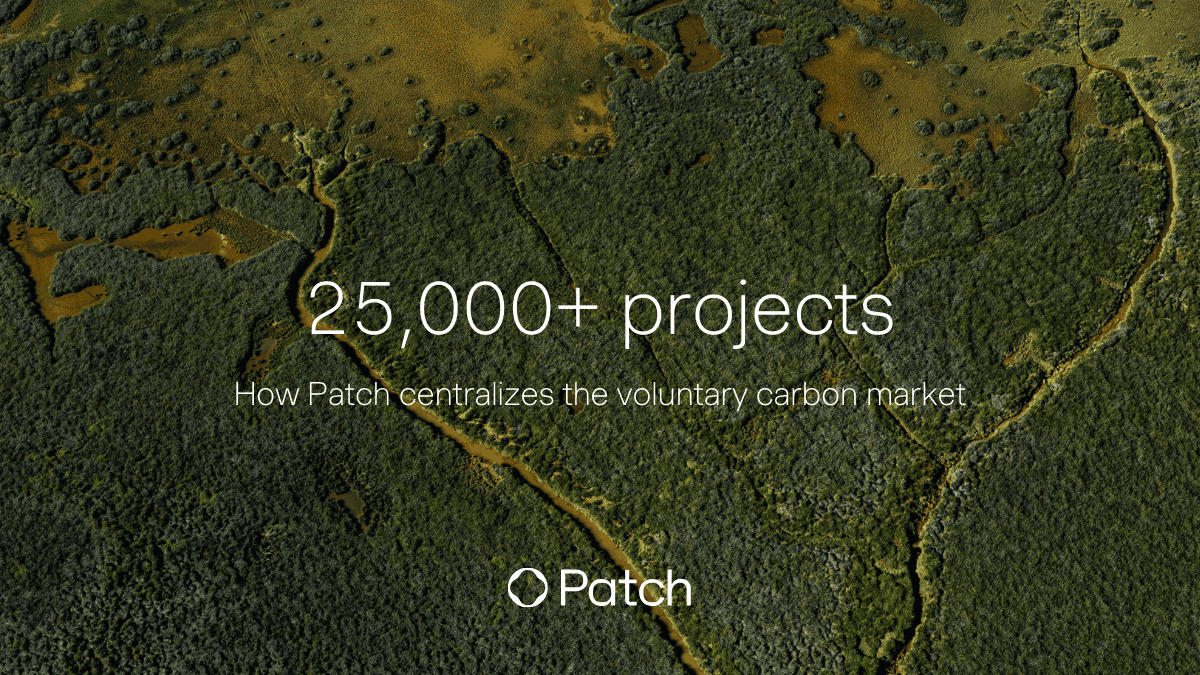“The past 12 months have seen a lot of change in carbon markets.”
That’s a phrase you could have used at any point over the last five years, and it would have been true. It’s true again in 2024, when demand surged for carbon credits in the beginning of the year, regulations in California and the EU began requiring reporting from companies on their credit purchases, and major iterations in standards from VCMI, ICVCM, and SBTi were released.
The upshot of all this change is that we continue to see improvements in the science of measuring the impact of climate projects. There’s more transparency being demanded of corporations, and generally speaking, the market is prioritizing higher quality credits.
The downside is that carbon markets are directionally evolving toward complexity — not away. And that means there’s just more information to parse for sustainability teams.
As we looked to make our trust and safety programs more responsive to changes in the market and the latest science, we also wanted to stay in tune with what carbon credit buyers were telling us they needed: not just integrity, but also translation. We had to make it easier for buyers to understand our criteria so they could have confidence in it.
How we’re being responsive
Last year, Patch released our core project acceptance criteria. It was built to set a baseline for comparing all projects across the voluntary carbon market — regardless of the project type or verification process. To develop these criteria, Patch built on a foundation of deep understanding of the existing standards in the market, including ICVCM’s Core Carbon Principles and the U.N. Article 6 Standards.
Every project type needs a pathway to demonstrate its validity and quality. At Patch, we’re convinced many approaches — both nascent and established ones — will ultimately ensure a rebalanced planet. Therefore, it’s just as important to support high-quality scaled projects as it is to support innovative ones that have yet to scale.
Over the past year, we’ve seen the demand for more — more data, more transparency, more access to information. Buyers are increasingly asking to dig deeper into the specific attributes of the projects they’re looking to support. A one-size-fits-all approach to diligence couldn’t meet this demand — but creating tailor-made processes and criteria for each individual project would never scale either.
As a result, we’ve updated the assessment frameworks that Patch uses to evaluate projects. These frameworks are built around the risks and benefits specific to the twelve most common project types.
This level of granularity allowed us to create consistency for similar projects, but also enough specificity for different ones. For example, assessing integrity for a direct air capture (DAC) project requires drastically different inputs and expertise than assessing integrity for an avoided deforestation project. Measuring how much carbon a DAC project removes is much more straightforward than quantifying the complex dynamics of ecosystem change and human behavior inherent to reducing deforestation. On the other hand, as a more mature project type, forestry has more standardized rubrics compared to emerging engineered removal methods.
Evaluating projects by type is an additional step that allows us to leverage the best-available criteria for any given project type from across the climate community. It’s purpose-built to be extremely responsive to changes in the market landscape, which our experts can translate into the best advice for your sustainability strategy.
Comparing projects based on specific attributes will ensure that we can be standardized in how we are evaluating project risks and benefits. That will help out buyers who are looking for key project attributes while also representing supplier impact fairly and accurately.
We’re pairing these criteria with a comprehensive data set that pulls from every corner of the voluntary carbon market. This will enable our experts to help buyers understand why projects meet evolving standards (like CORSIA and ICVCM) as well as better interpret scrutiny from the media and academia.
What’s in the updated criteria
Our trust and safety whitepaper now includes assessment frameworks for these 12 project types:
- Afforestation, reforestation, and revegetation
- REDD+
- Improved forest management
- Agriculture land management
- Blue carbon
- Cookstoves
- Landfill gas
- Renewable energy
- Biochar
- Enhanced rock weathering
- Engineered capture and storage
- BiCRS
Each criteria contains about 10 to 20 questions that give Patch access to core project attributes, including baselining approaches, carbon stock measurement, financial additionality quantification, presence of legal or policy incentives, non-permanence risk assessment, leakage buffers, and a lot more.
Patch will continue to build assessment frameworks for other project types not yet included. We’ll also do in-depth evaluations against key project attributes for any individual project that does not currently have an assessment framework. What are those key attributes?
Every project type has different risks and benefits based on their goals, process, and scale. While there are core project attributes (like additionality and leakage) that are relevant across project types, the way that we measure or evaluate risk of those attributes is very specific to the nature of the project.
A closer look at additionality
Let’s dig into additionality to prove the point. Additionality measures the climate impact that the funding generated by carbon credit revenues directly creates. It’s often based on a counterfactual — what would have happened without the sale of the credit. If the answer is the project wouldn’t exist, the project is additional. But depending on the project type, very different inputs are required to create that counterfactual scientifically.
Landfill gas: Are there legal or policy incentives in place mandating project activities? If so, carbon credits may not be needed to incentivize future project development.
Renewable energy: Can the project sustain itself by selling its energy at fair market prices? Looking at the market penetration of a renewable energy subtype can (in part) determine if that subtype is common, and therefore financially viable without carbon credit revenues.
REDD+: What economic factors are actually driving deforestation in an area? If a project plans to halt deforestation, it’s important to demonstrate why the baseline scenario is financially preferable.
Even among different types of forestry projects like REDD+, the way we quantify key risks can differ substantially:
For an avoided deforestation project, measuring the baseline scenario means understanding the depth of deforestation that occurred prior to the start of the project, how the region is at risk to future deforestation, and the barriers to adopting more sustainable practices.
For an improved forest management project, measuring the baseline is about understanding historic land management practices, how natural regeneration is currently factored into existing practices, and whether or not there are any easements or protections in place that promote sustainable harvesting on lands.
Both rely on quantifying historic land use, but the application is substantially different. That’s the sort of calculation we see throughout the carbon market on a project type basis.
Our updated project acceptance criteria compares like to like in order to create a scalable, process-driven approach for our team to review projects that also ensures we’re delivering integrity, transparency, and translation to our buyers.
If you’re interested in more info on how to apply a strategic criteria to your carbon credit purchase, our carbon credit playbook for Chief Sustainability Officers includes the best-practice procedure we used with Workday. If you’d like to get started with our Climate Strategy and Solutions team, contact us today.






